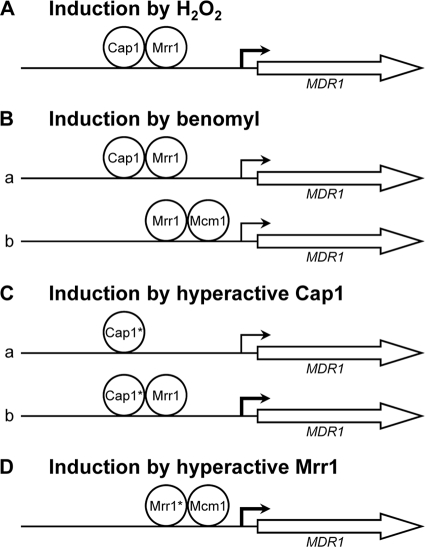Fig. 4.
Model of the roles of the transcription factors Cap1, Mrr1, and Mcm1 in MDR1 upregulation by inducing chemicals or gain-of-function mutations in Cap1 and Mrr1. The thinner bent arrows indicate reduced MDR1 promoter activity in the absence of the missing transcription factor. (A) H2O2 activates Cap1, resulting in accumulation of the transcription factor in the nucleus, where it can induce MDR1 expression, together with Mrr1, in an Mcm1-independent fashion. (B) Benomyl activates Mrr1 in an unknown way and also, at least partially, Cap1. When Cap1 is available at the MDR1 promoter, Mrr1 and Cap1 can induce MDR1 expression independently of Mcm1 (a); in the absence of Cap1, Mrr1 requires Mcm1 to induce MDR1 expression (b). (C) A hyperactive form of Cap1 (labeled Cap1*) can induce the MDR1 promoter in the absence of inducing stimuli and independently of Mcm1 and Mrr1 (a), but full induction requires the presence of Mrr1 (b). (D) A hyperactive Mrr1 containing a gain-of-function mutation (labeled Mrr1*) can induce the MDR1 promoter independently of Cap1 (which is localized in the cytoplasm in the absence of inducing stimuli) but requires the coregulator Mcm1.

